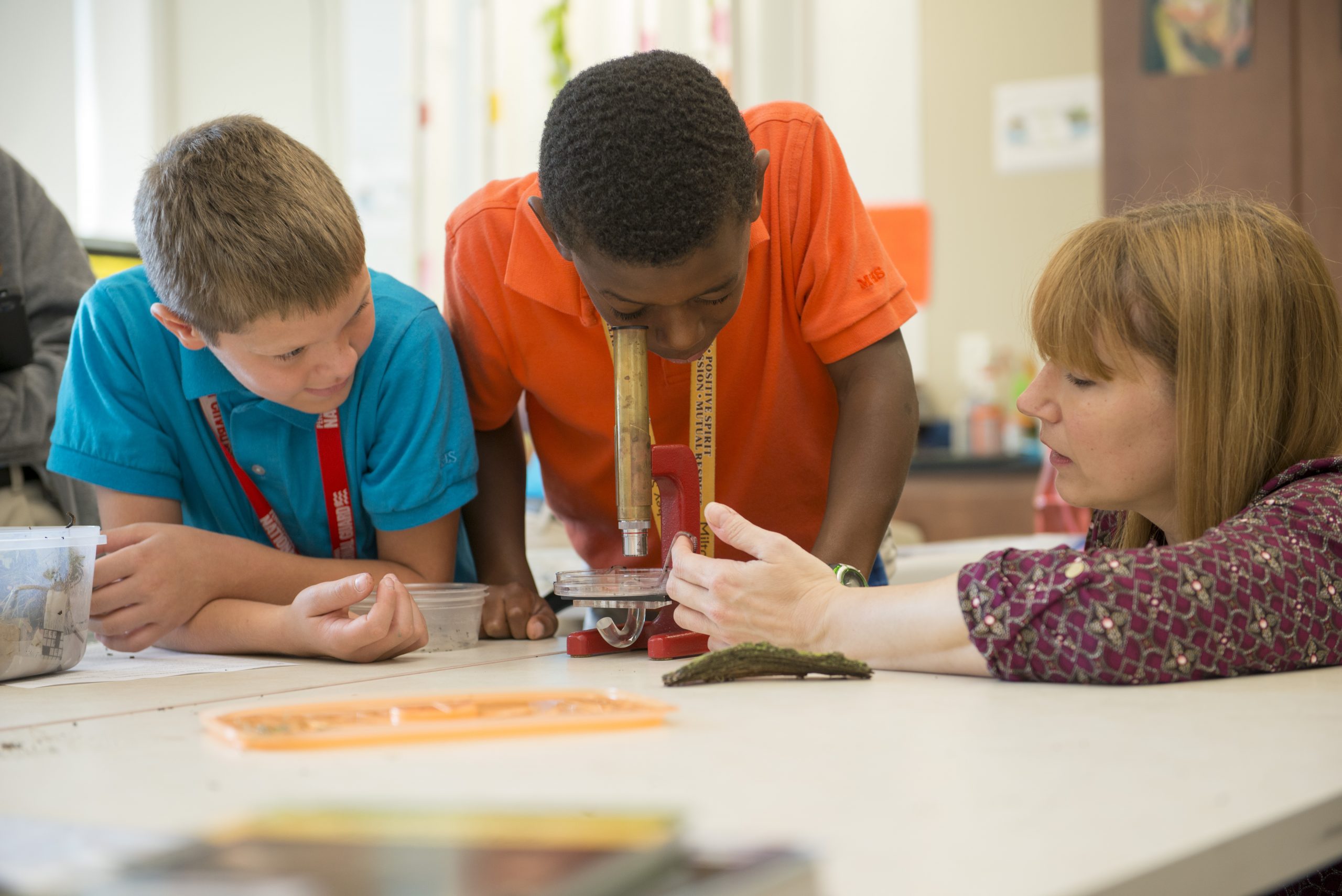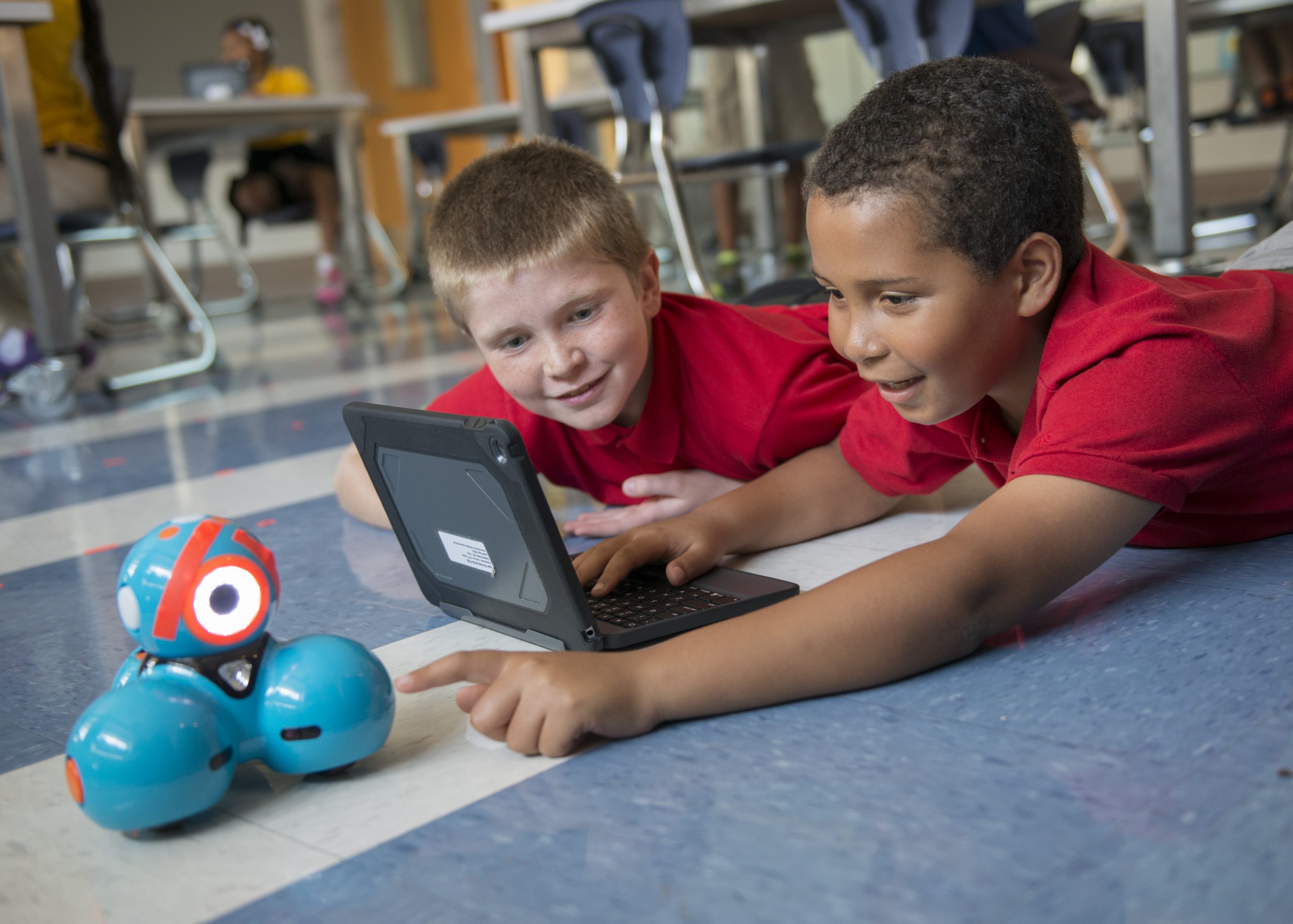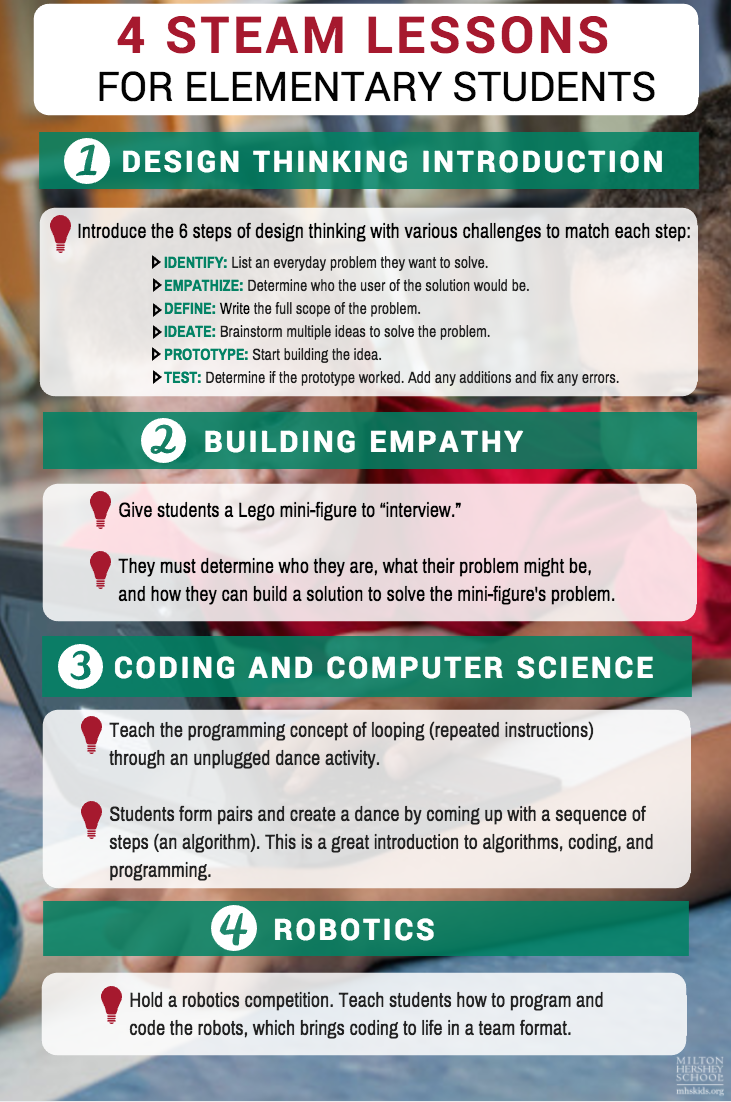4 Ways to Bring STEAM to Life for Elementary Students
Featuring Dr. Jaunine Fouché, MHS Science Curriculum Supervisor
At Milton Hershey School, our STEAM (Science, Technology, Engineering, Arts and Math) curriculum is a major part of students’ education beginning in elementary school.
In our dynamic Innovation Lab designed for first through fourth-graders, students complete interactive activities that revolve around science, technology, computer programming, art, and robotics. With introductions to design thinking, coding, engineering, and more, we’re taking theoretical concepts and making them real for students.
As they develop their logic and reasoning skills through deep thinking and trial and error, students begin to view failure as a positive outcome. They also feel empowered by having an authentic purpose when solving a problem or completing a task.
“Productive failure leads to success, but students are still programmed to view failure as negative,” said MHS Science Curriculum Supervisor, Dr. Jaunine Fouché. “In the classroom, we set the expectation that everyone will have to approach a problem multiple times.”
To get an inside look at our innovative approach to education, MHS Technology Innovation Lab Instructor Joel Crowley shared four of his favorite lessons that bring STEAM to life for elementary students.
1. Introduction to Design Thinking
Goal: An overview lesson to introduce the concept of design thinking.
To introduce the idea of design thinking, we gave students a challenge for each step of the design thinking process. Whether they chose a real, everyday problem, or imagined a problem in the world of Legos, they completed the following tasks to build a solid foundation in design thinking:
- Identify—Ask students to list a problem they want to solve.
- Empathize—Encourage students to consider the user and choose a person who would need this problem to be solved.
- Define—Help students understand the problem by writing down the full scope.
- Ideate—Motivate students to brainstorm and come up with a long list of potential solutions to the problem.
- Prototype—Allow students to begin developing their ideas and putting them into action by building solutions.
- Test—Have students determine if the prototype worked and solved the problem. They should add necessary additions and fix any errors that arose.
Tip: Interview students and ask them to define each step. Create a video to stream for future students during the overview lesson—sometimes, students will describe concepts in a way that’s more accessible to their peers.
2. Building Empathy
Goal: A lesson to tackle the skill of understanding the “user” and developing empathy throughout the design thinking process.
Empathy is defined as the ability to share and understand the feeling of another person. One of the biggest challenges with teaching design thinking is helping students master the skill of empathy. Considering the “user” is a new term for many elementary students, so we introduced the concept by working with Legos.
Students start by building a Lego creation. After building their structure, we asked them why they built it. Was it only because their teacher asked them to? Throughout the discussion, many students begin asking for Lego mini-figures and realize the importance of building with a “user” in mind.
At this point in the lesson, we encouraged students to hold an “interview” with their mini-figure. Students must determine who they are, what their problem might be, and how they can build a solution to solve the mini-figure’s problem. This is an engaging activity that requires creativity, reinforcing the idea that the user is ultimately the reason why we design.
Tip: Stress the importance of developing a plan as part of their engineering process.
3. Coding and Computer Science
Goal: A lesson to build students’ computer science foundation and develop their computational thinking skills.
How do computers work? To show elementary students the various components that go into computer science, we introduce them to elementary coding curriculum, algorithms and programming, and computer hardware components. Students have the opportunity to dismantle old computers to identify different pieces of hardware.
They also have scheduled time in the STEAM Innovation Lab to work through beginner coding courses through interactive platforms like Code.org. Through group work and individual exercises, students get excited about coding and even participate in nationwide movements like the Hour of Code week.
One of students’ favorite hands-on STEAM activities that introduces the programming concept of looping is an unplugged dance activity. Students form pairs and create a dance by coming up with a sequence of steps (an algorithm). They’ll perform the steps of the dance in front of the class, which helps make connections to inputting algorithms into a computer program that would eventually be coded to complete the algorithm, or dance steps, automatically.
Tip: Find free online resources that offer unplugged activities, videos, and interactive coding platforms that students can work on individually and in groups.
4. Robotics
Goal: A lesson to teach students how to use technology to solve problems, and apply their coding and computer science skills.
Robotics is an exciting lesson to introduce to elementary students who are interested in STEAM activities and enjoy using technology to solve problems.
Students have the option of participating in a robotics competition, where they meet one day a week to practice working with multiple types of robots. They learn how to program and code the robots, which brings coding to life in a fun-filled setting.






